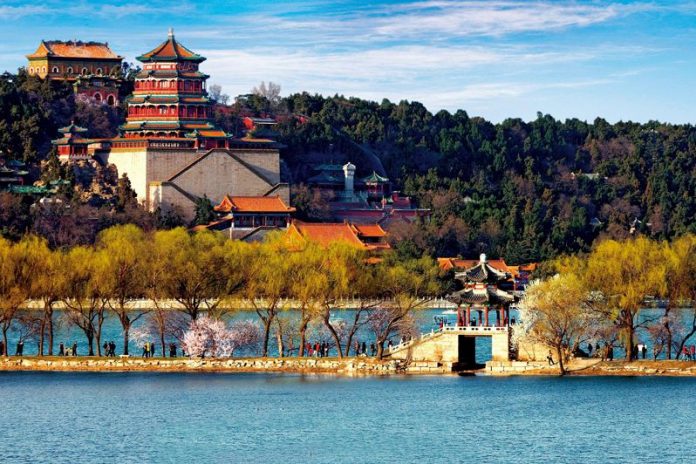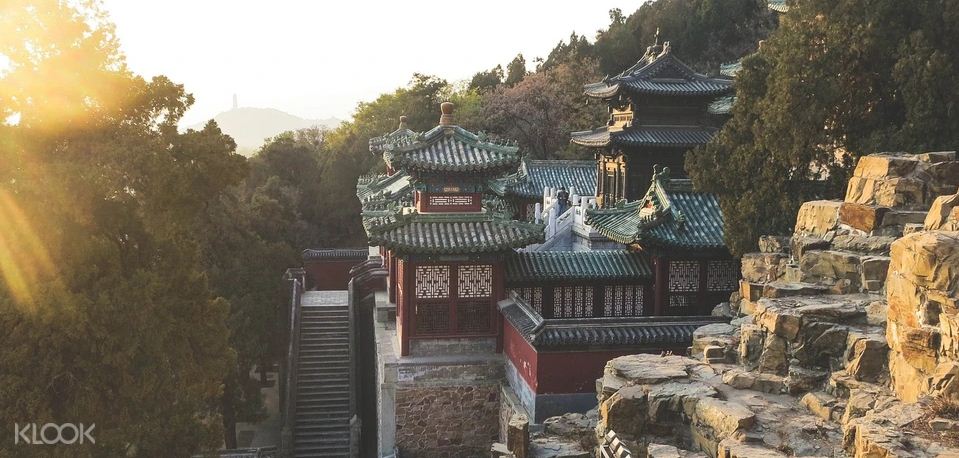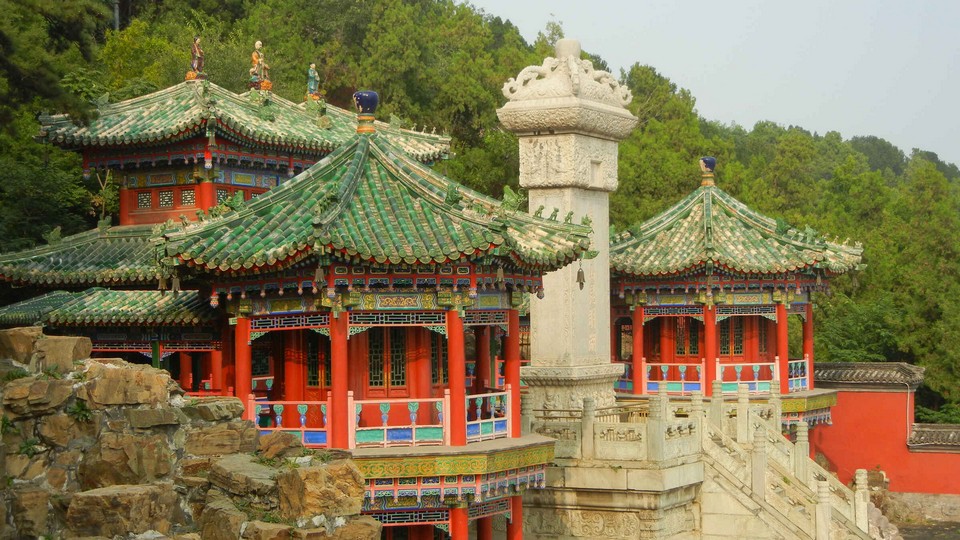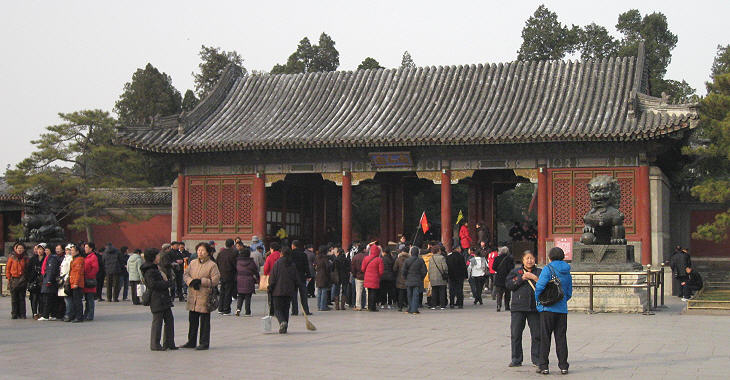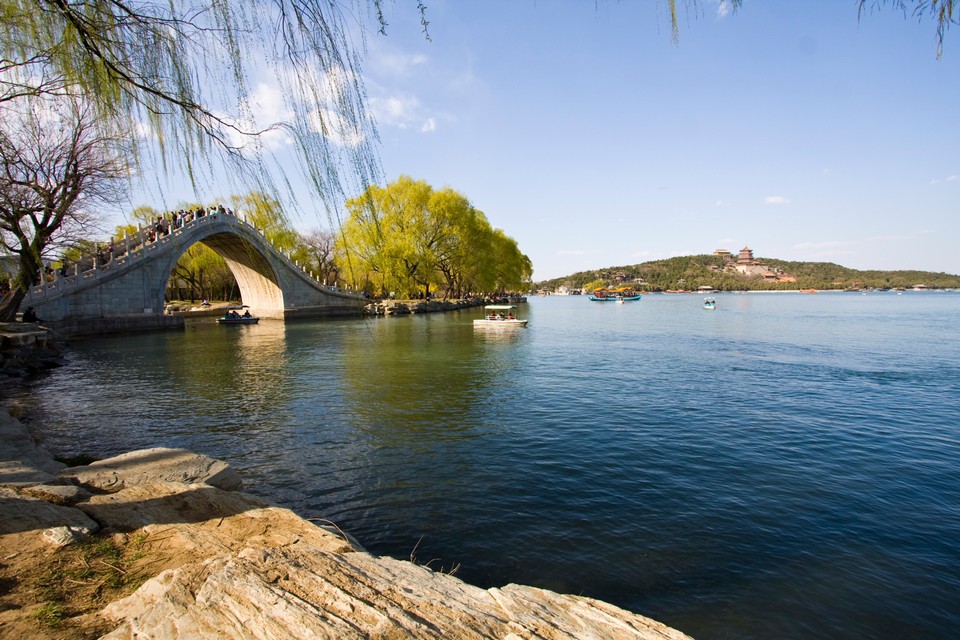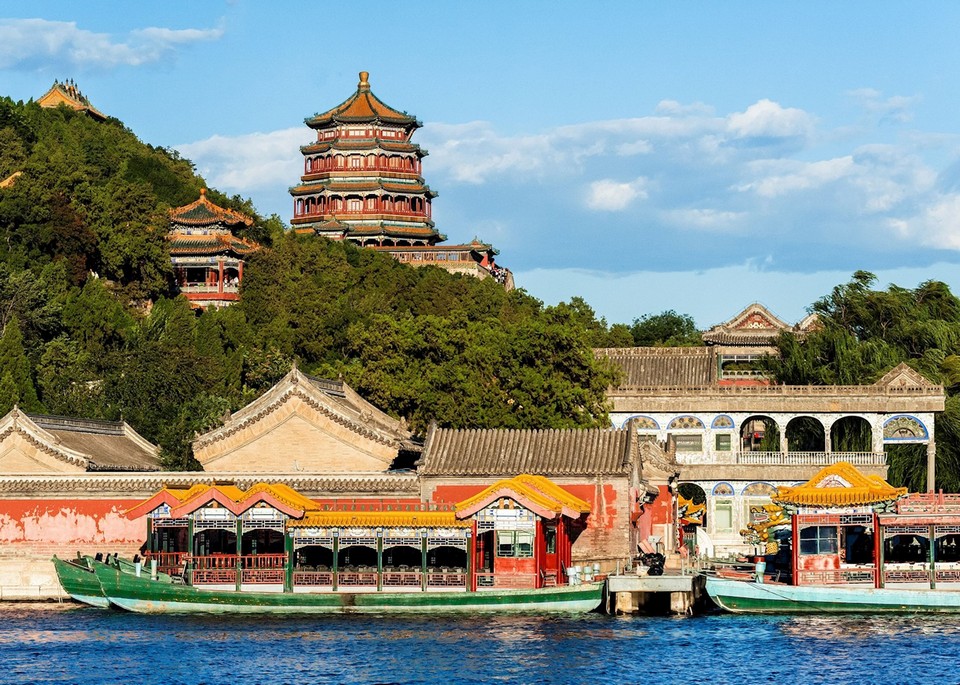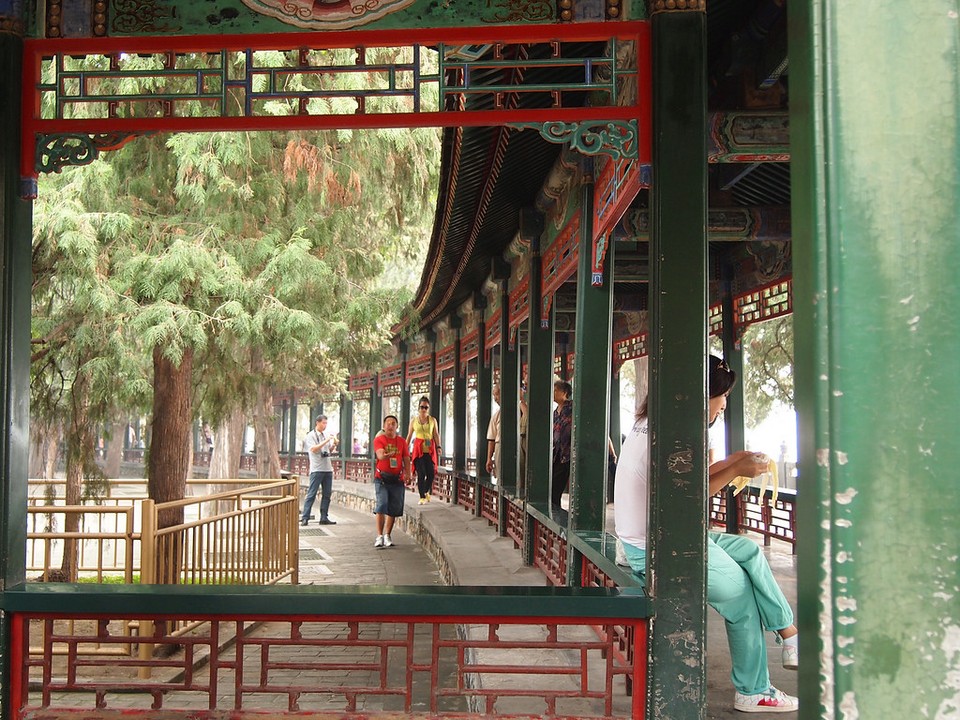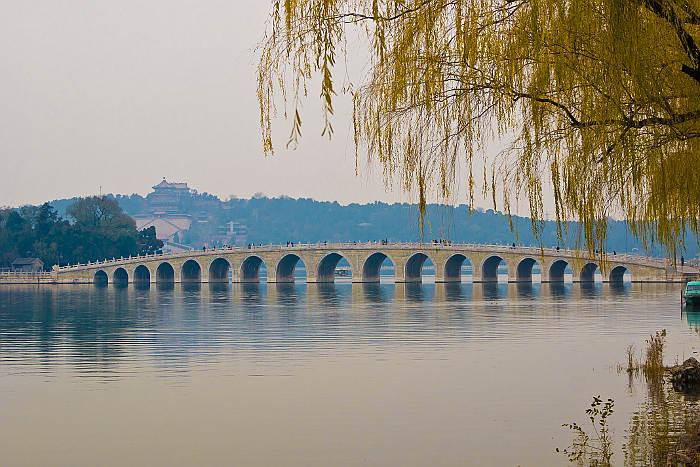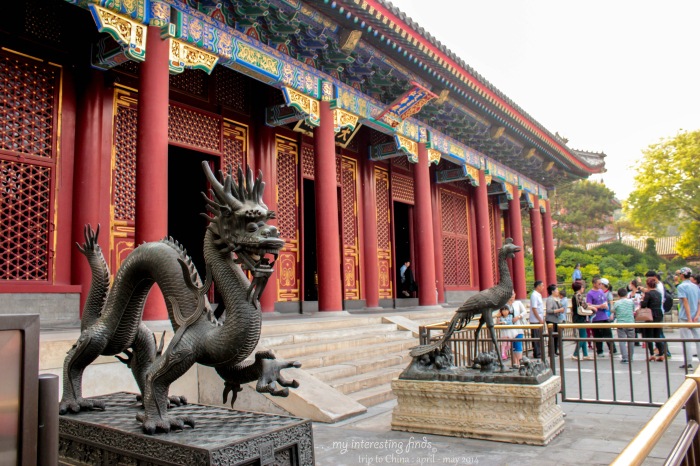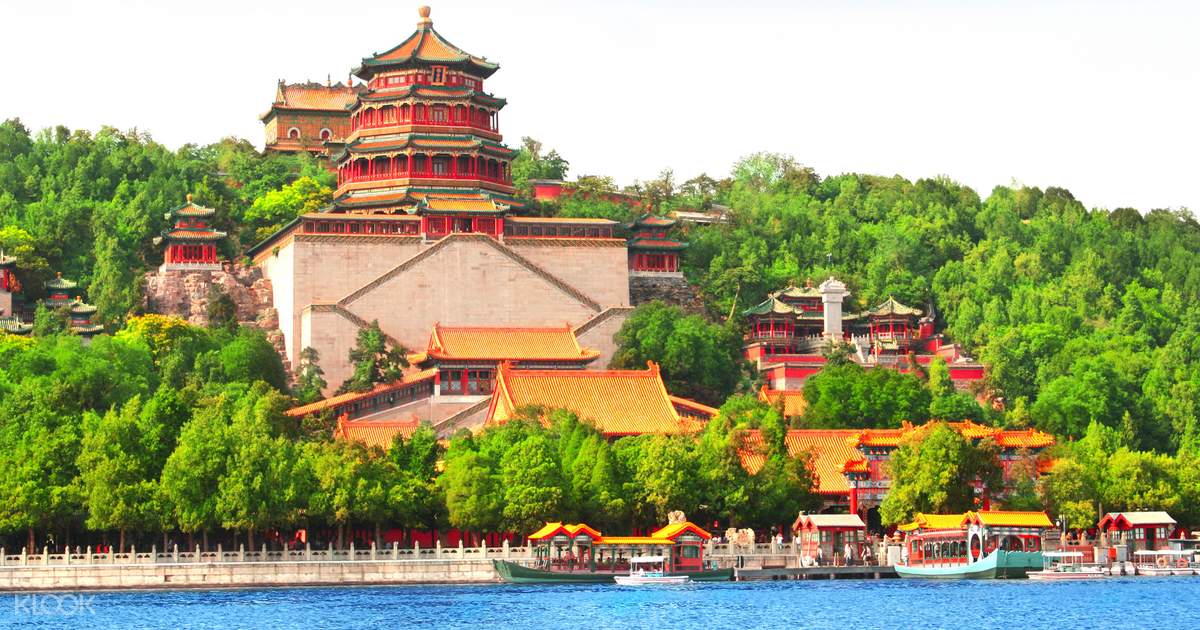Yiheyuan (Yihe Yuan, Yi He Yuan) is an Imperial Garden in Beijing, also known as the Summer Palace Beijing is one of the most attractive tourist places in Beijing. Dubbed the “Summer Palace China”, this is a favorite vacation spot for kings and royal family. It has gone through many ages with different names, is an architectural masterpiece of Chinese classical landscape garden design and has great feng-shui significance for the Chinese people. It also has been recognized by UNESCO as a World Heritage Site since 1998.
- The FULLEST guide to Fenghuang Ancient Town: Top things to do, Eat, Tips & MORE
- Must do in Macau: 11+ best things to do in Macau for First-Time Travelers
- The ULTIMATE guide to Shanghai Oriental Pearl TV Tower: Top things to do, Ticket Prices, Tips & MORE
- The ULTIMATE guide to Fujian Tulou China: How to get there, Top things to do, Tips & MORE
- The ULTIMATE guide to Suzhou Ancient Town: Top attractions, best things to do & MORE in the Heart of the Modern City
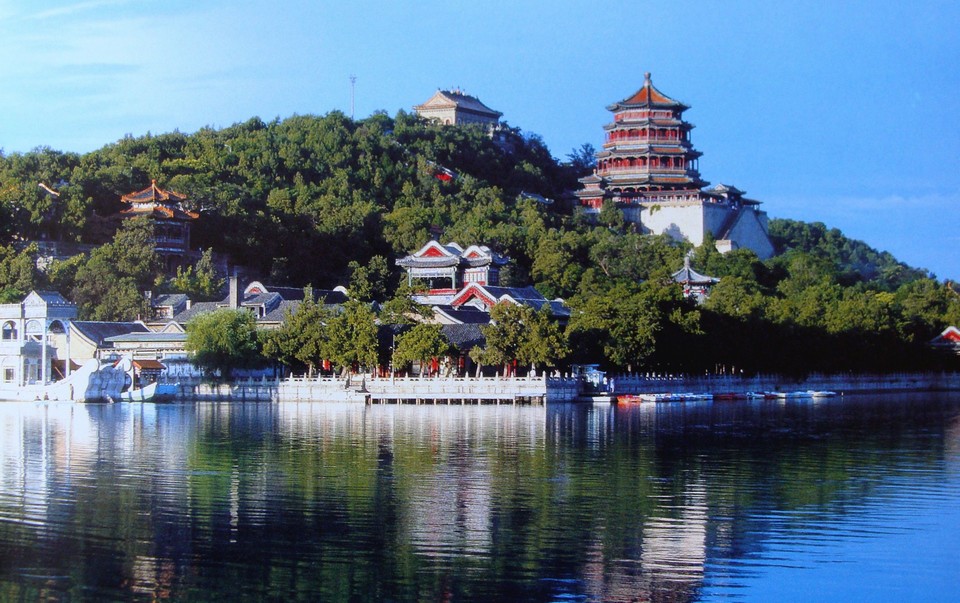
So, what to do and how to visit the Summer Palace Beijing (Summer Palace China)? – The China’s most beautiful classical and forest garden, the state of art of Chinese classical architectural style and feng shui. Let’s checkout our guide to Yiheyuan Beijing (Yi He Yuan Beijing) from how to get there, interesting facts as well as history, places to visit, top things to do to find out the answer!
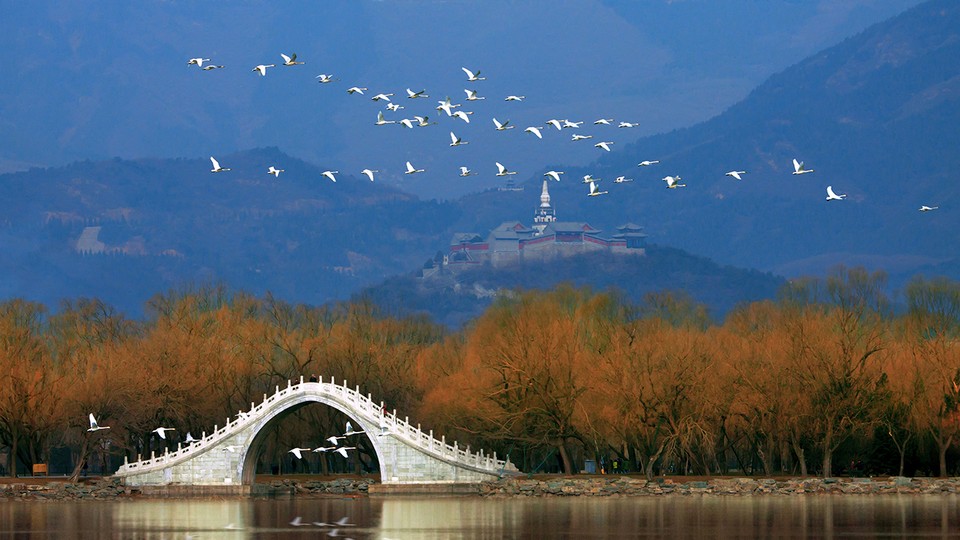
The name of Yiheyuan means the garden of preserving harmony. Through many ups and downs in history, Yiheyuan is still very well-preserved. It almost kept its original architecture. Looking down from above, Yiheyuan Beijing is like a jade island, surrounded by hills and lakes which are symbols of longevity over time in oriental culture, especially in China.

Yiheyuan Beijing: Overview of Summer Palace Beijing
Where is Yiheyuan?
The Summer Palace Beijing is located in Haidian District in the Chinese capital of Beijing. This site is located 15km to the northwest from the city center.
- Location: Address: 19 Xinjiangongmen Rd, Haidian District, China, 100091
- Tel: +86-10-62881144.
- Opening hours: Peak season (April 1 – October 31): 6:30AM – 6PM / Low season (November 1 – March 31): 7AM – 5PM
Admissions
Entrance tickets (not including the attractions inside):
- April to October: 30 yuan
- November to March: 20 yuan
Tickets to visit the tourist spots in the Yiheyuan (apply for all seasons) including:
- Garden of Virtue and Harmony ((Dehe Yuan): 5 yuan
- Tower of Buddhist Incense (Foxiangge): 10 yuan
- Suzhou Street and Danning Hall (Suzhoujie): 10 yuan
- God of Literature (Wenchang Hall): 20 yuan
- Garden of Harmonious Pleasures (Xiequyuan): 5 yuan.
- Combo tickets to access all: 60 yuan (April to October), 40 yuan (November to March).
NOTE: Free admisions for children under 1.2 meters.
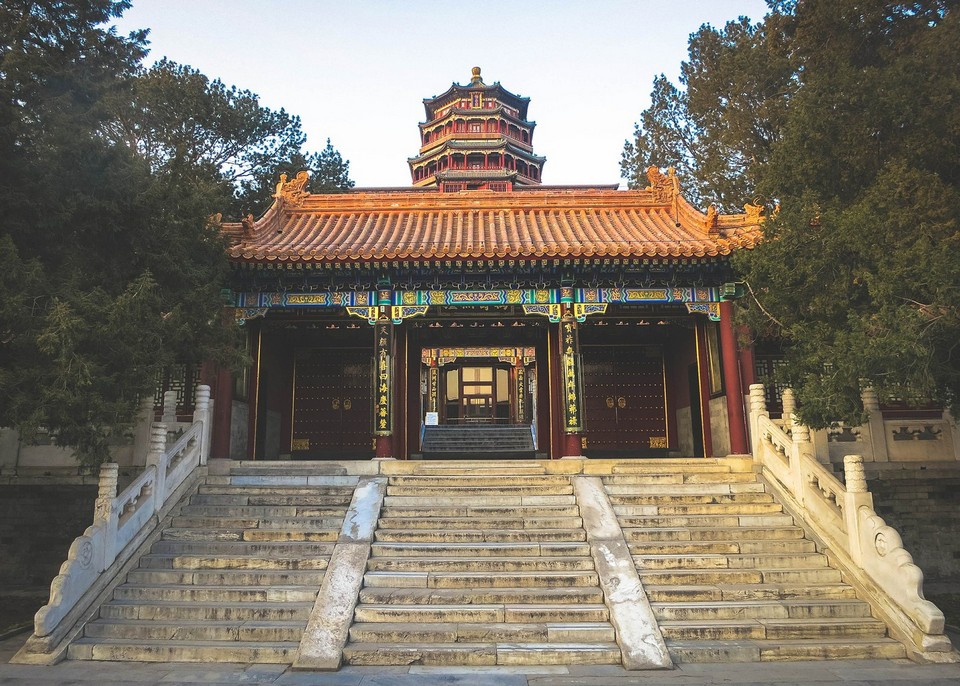
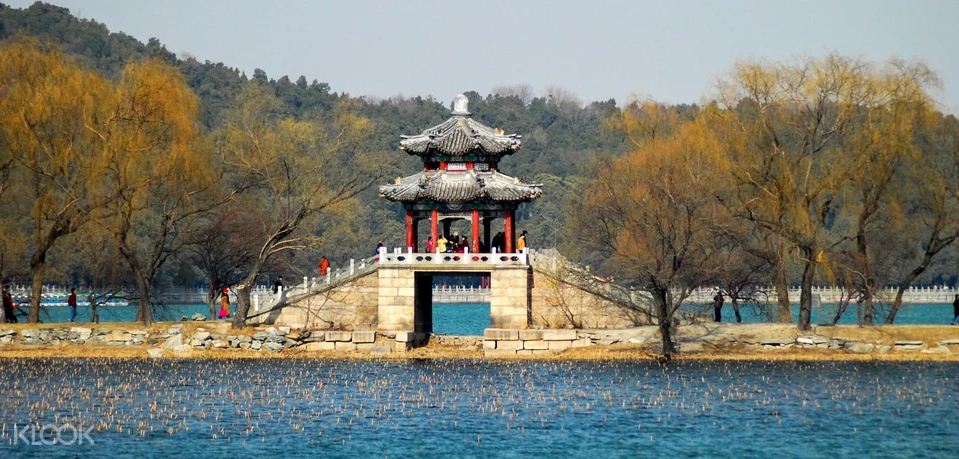
Beijing Summer Palace Admission Ticket
You can book entrance tickets in advance here.
Getting to Summer Palace Beijing
There are the following ways to get from Beijing city center to Yiheyuan:
- Subway: Take the subway Line 4 to Beigongmen Station (北宫门站), then walk for 3 minutes to the northern gate of Yiheyuan.
- Taxi: It takes about 40 minutes and costs about 80 – 100 yuan. However, you should avoid traveling during peak hours.
- Bus: Take the bus No. 301, 303, 332, 374, 375, 726, 826, 801 and 808 or Sightseeing Bus Line 3 and get off at Beigongmen stop.
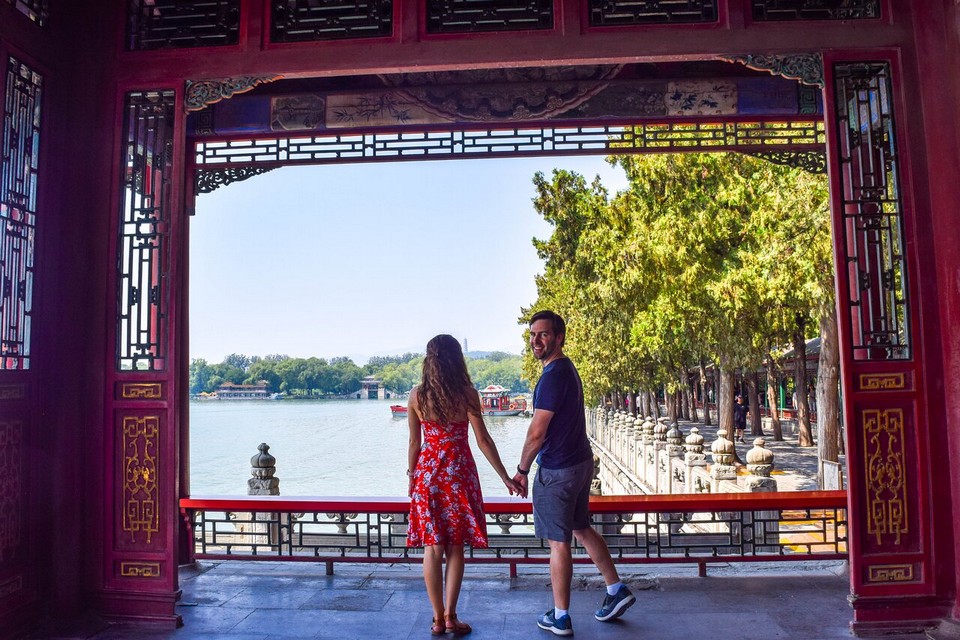
Yihe Yuan Beijing guide: Summer Palace Beijing History

Yiheyuan was built about 800 years ago from the Kim dynasty (1115 – 1234). Since then, successive dynasties continued to build and develop this complex. At first, under the Jin dynasty, on the land of Yiheyuan today, there was another palace built on it called “God Mountain Palace”. In 1750, Qianlong Emperor built Qingyiyuan (The Park of Pure Ripples) to celebrate the 60th birthday of his mother. By 1860, British – French alliance forces attacked Beijing, causing Qingyiyuan was severely damaged.
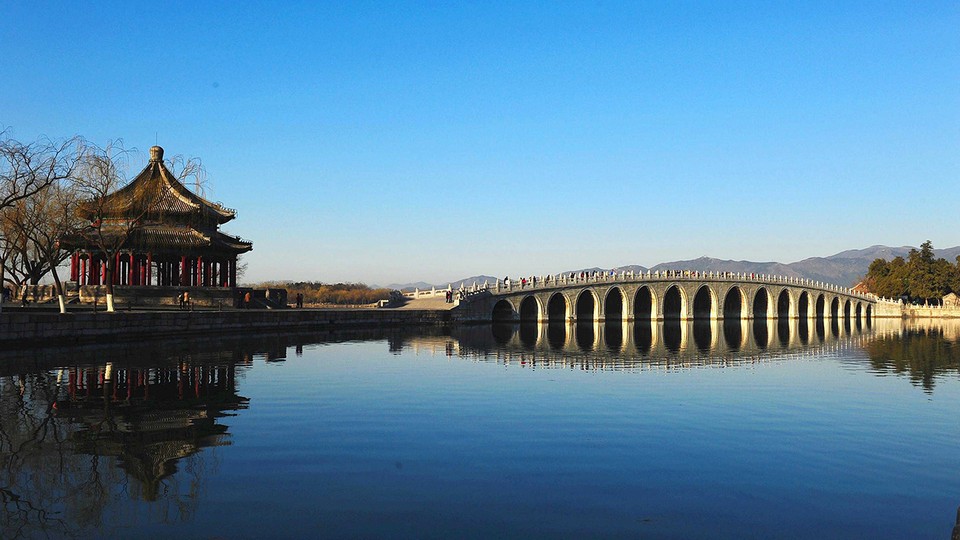
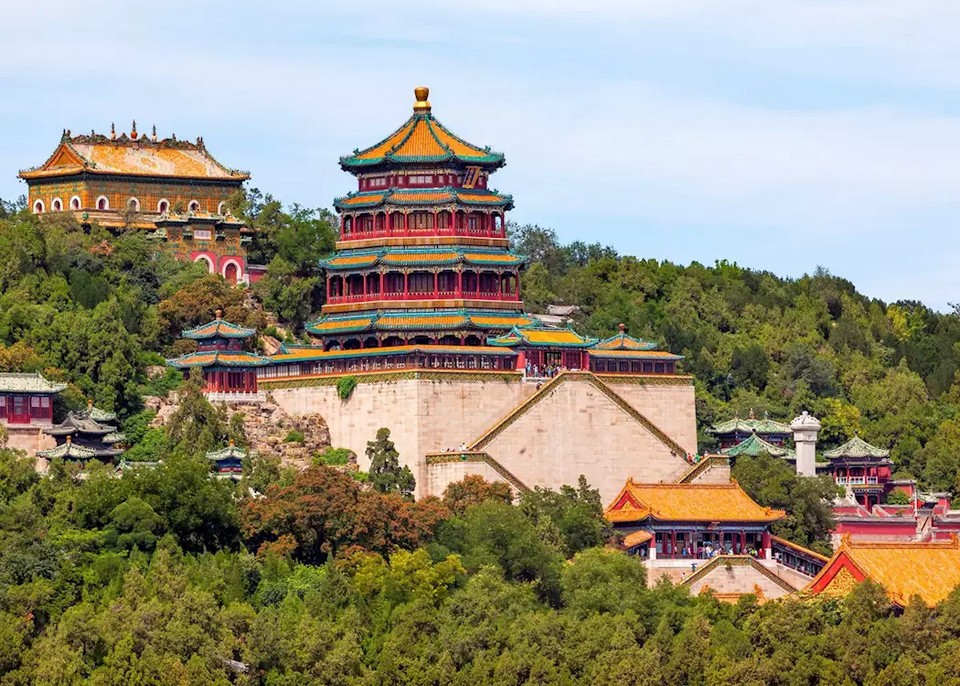
In 1888, Empress Dowager Cixi had embezzled 50,000 taels of silver from public funds which originally used to modernize imperial navy to restore Qingyiyuan for 10 years later and she also changed the name of Qingyiyuan to Yiheyuan as we known today. And today’s Yiheyuan appearance is also what was created from this restoration.
In 1900, Yihe Yuan was suffered damage again in the Boxer Rebellion (Yihetuan Movement). When Empress Dowager Cixi returned to Beijing, she once again restored Yiheyuan. It took 2 years to done this restoration.
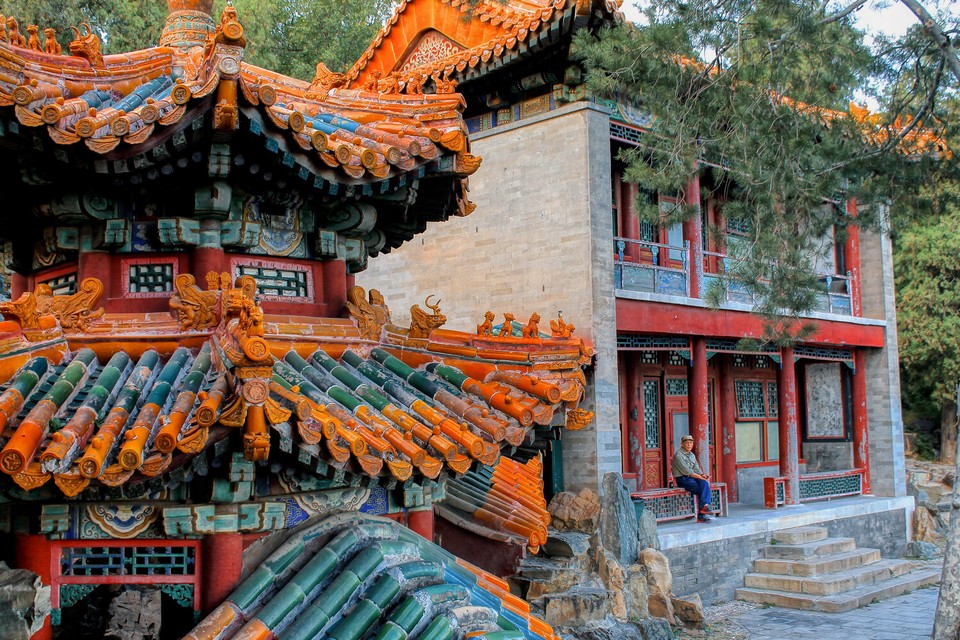

In 1924, it was opened to the public for the first time as a tourist attraction and 1998 Yiheyuan was recognized as a World Heritage Site by UNESCO. Yiheyuan has now become a well-known and must-visit tourist attraction in Beijing in particular as well as in China in general.
The architecture of Summer Palace Beijing
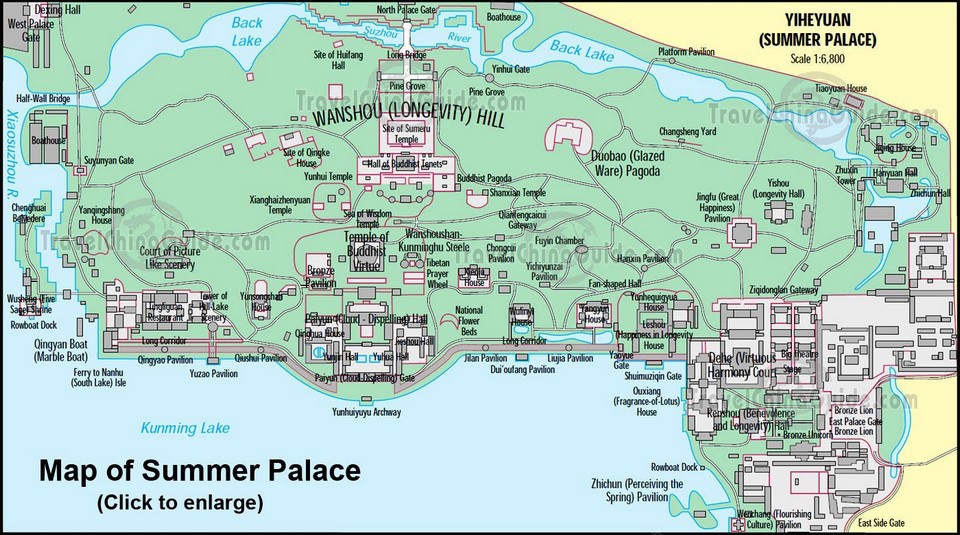
The area of Yihe Yuan is up to more than 290 hectares with mainly dominated by Longevity Hill (Wanshou Shan) and Kunming Lake. According to the feng-shui point of view, this is the direction of “Back Mountain Facing Water” which is very good in oriental culture, creating a solid position like a mountain and as strong as water. In which, Kunming Lake occupies 220 hectares. It was entirely artificial lake and the excavated earth was used to build the Longevity Hill. While Longevity Hill with 60 meters high and has many magnificent buildings, halls, temples and pavilions built in sequence.
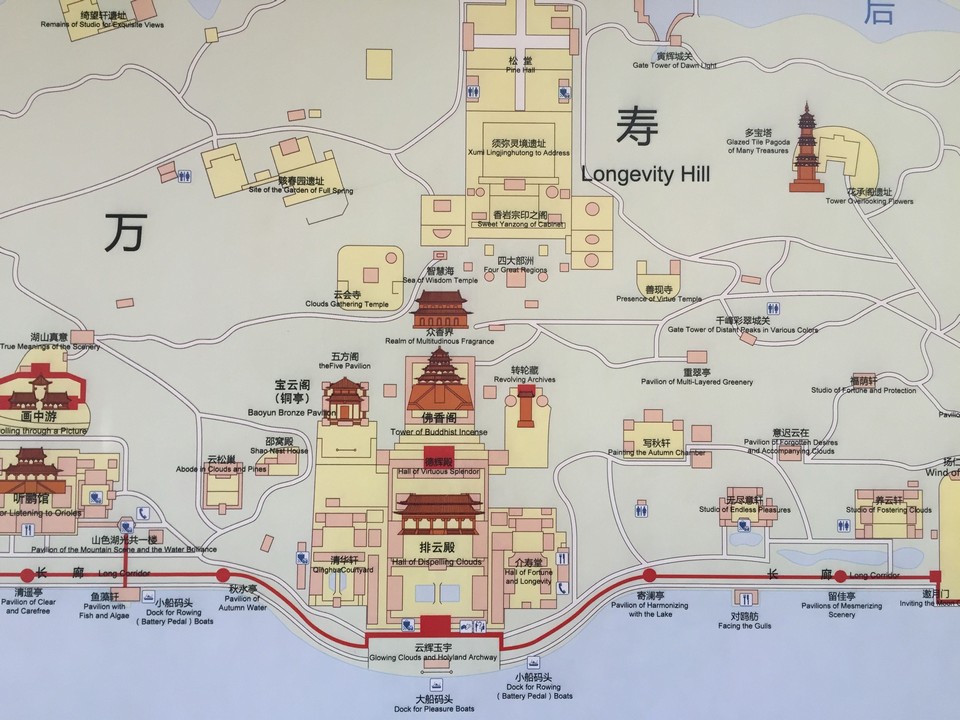
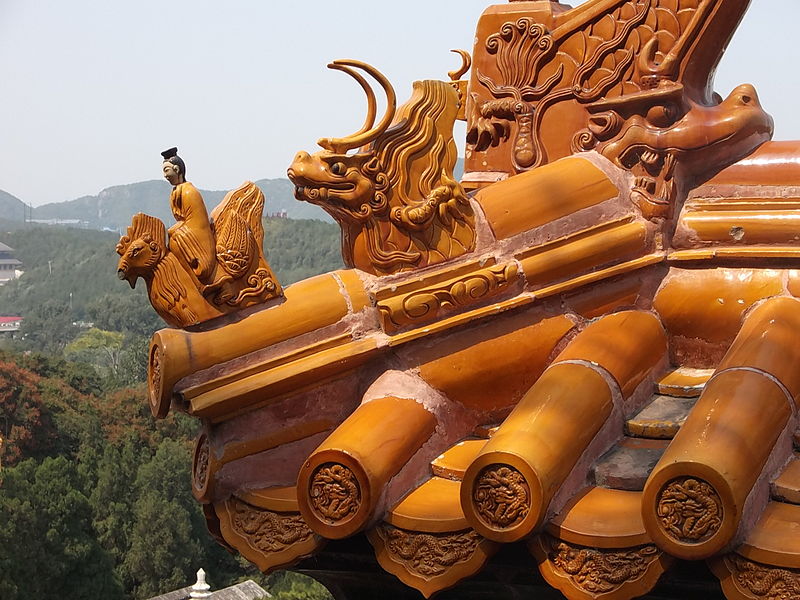
The Summer Palace China is divided into 3 zones: The Court Area (mainly Hall of Benevolence and Longevity (Renshoudian) where Empress Dowager Cixi met the mandarins and conducted state affairs), the Front Area of Longevity Hill (it’s a magnificentn area with the mos buildings including palaces, halls, pavilions and flower gardens) and the Rear Area of Longevity Hill. In addition to Kunming Lake, the area largely occupies the area of the Summer Palace Beijing is Longevity Hill. In general, visiting Yiheyuan, you will see how luxurious living life of the royal family and mandarins were in the past. Yiheyuan is the symbol of the living style of the royal family.
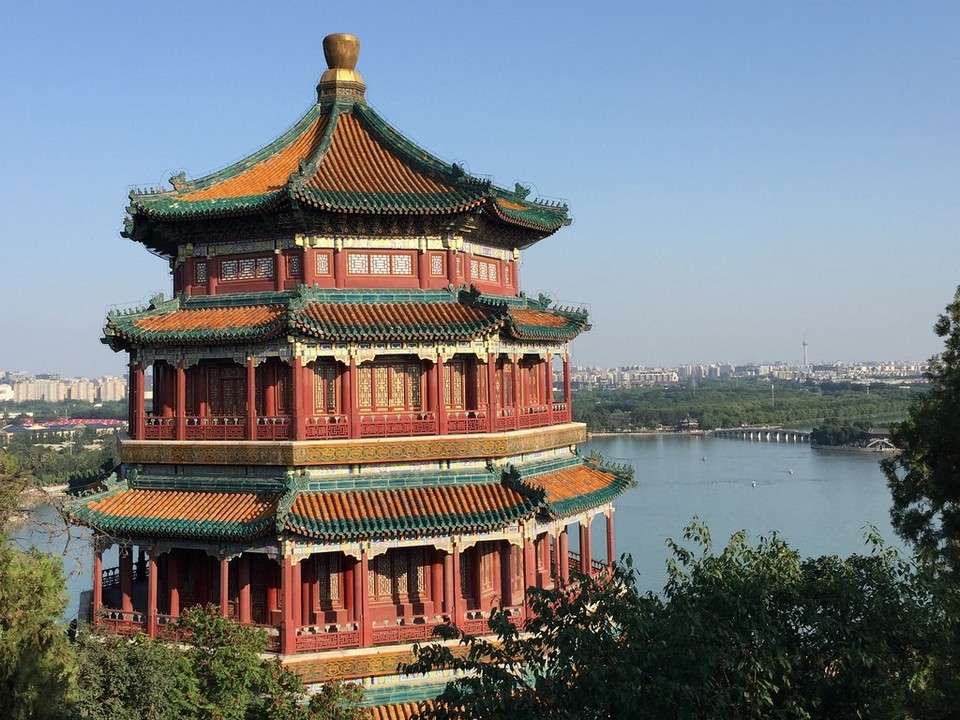

It can be said that Yiheyuan is not only beautiful, splendid, majestic in architecture but also has a sense of feng shui of the Chinese people. There have been many secret studies in Yiheyuan but still have not answered the meaning of its design.
What to do and where to visit in Yiheyuan Beijing?
The Summer Place China is a large complex consisting of many unique architectural works with halls, pavilions, palaces… With the meaning of “the Garden of Preserving Harmony”, the buildings here mainly were built for the purposes of relaxing, entertainment venue for the king and the royal family. Joining me to find out what’s attractive in Yiheyuan?
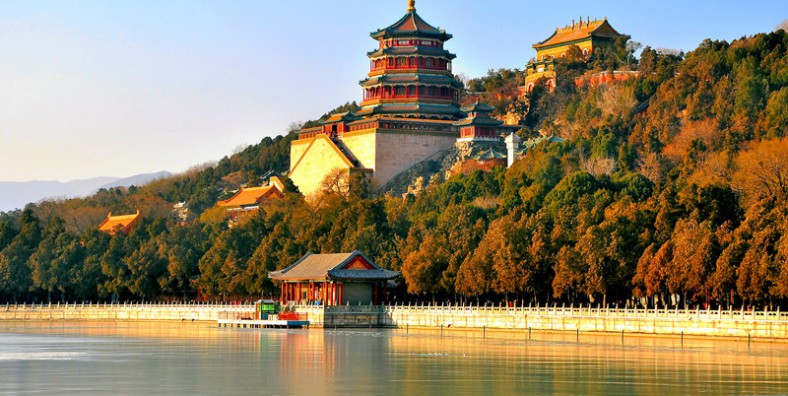
Wanshoushan (Longevity Hill)
If you do not know, you will think this place is a natural landscape but it is not so, all built by human hands. Wanshoushan is a hill that was created by soil dug from Kunming Lake. The total area of Yiheyuan is about 290 hectares. The most prominent are Wanshoushan and Kunming Lake, but the lake separately has occupied an area of 220 hectares. At the top of the hill is Paiyun Dian (Hall of Dispelling Clouds) and the nine-storey Foxiang Ge (Tower of Buddhist Incense) with the Thousand-armed Thousand-eyed Avalokitesvara statue inside. You can enjoy the panoramic view of Yiheyuan from above from here. The highlight of the mountain is the Tower of Buddhist Incense where Empress Dowager Cixi often was praying and reciting the Buddha’s name. This is a splendid and magnificent temple.
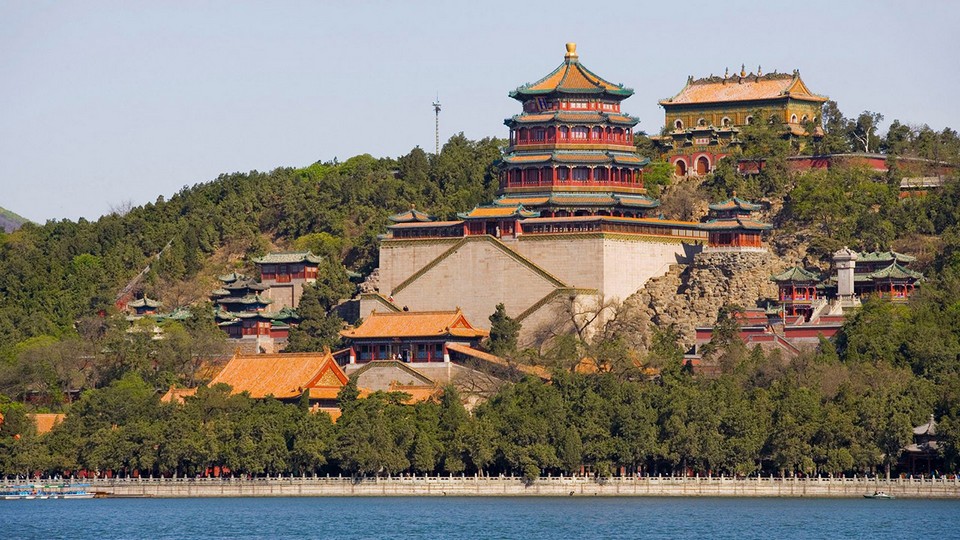
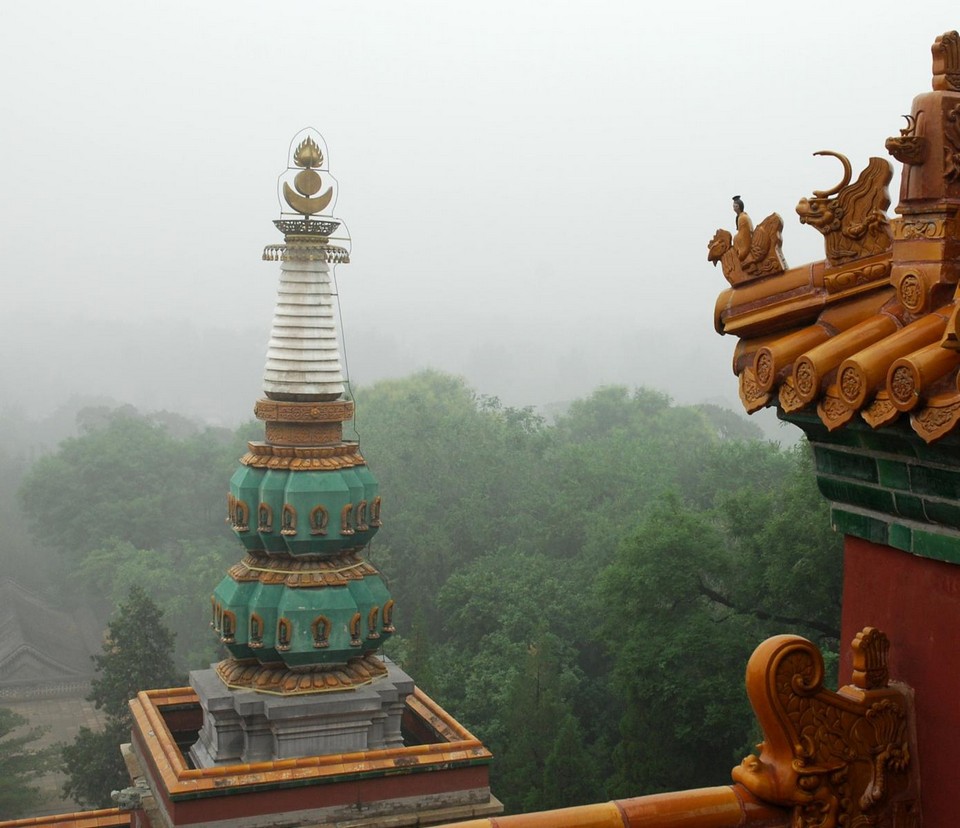
Donggongmen (Eastern Palace Gate)
The Eastern Palace Gate was located in the east of Yiheyuan, the main entrance gate to the Summer Palace and facing to the east, which was where the Qing emperors conducting state affairs (court sessions) and resting, including reception hall, palace, large stage and flower gardens… with sophisticated architecture and art. The six doors are painted red with the straight bars covered with gold paint which are two typical traditional Chinese colors. The main door hangs a large signboard with 3 golden words “Yiheyuan” surrounded by 9 dragons symbolizing the royal family. In the front are 2 lions playing ball, which were sculptured in the regime of Emperor Qianlong with majestic appearance.
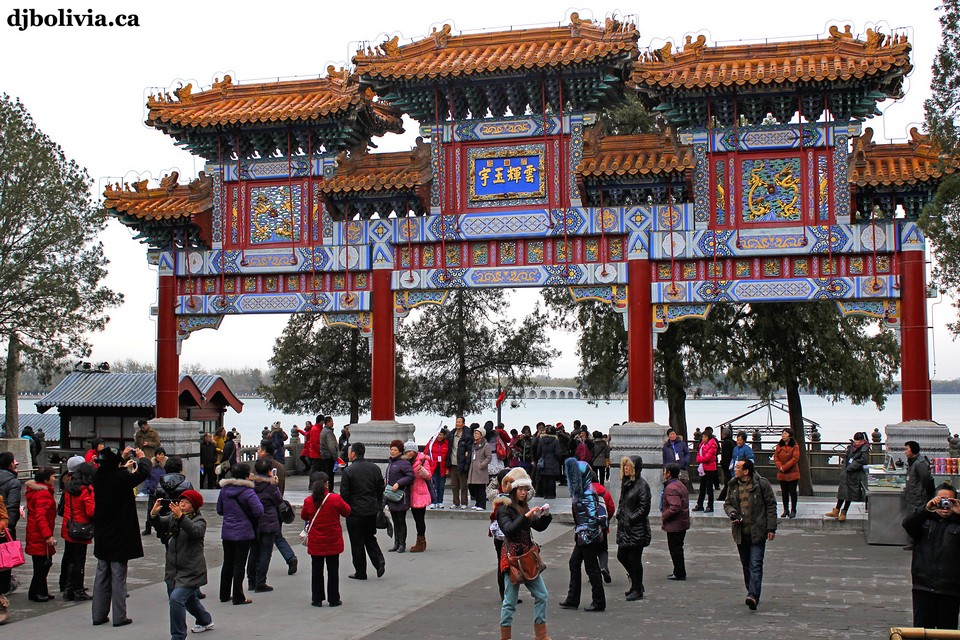
The Hall of Benevolence and Longevity (Renshoudian) is the most prominent architectural building in this area. The 7-room hall was where Empress Dowager Cixi and Emperor Guangxu heard about the main court and met with envoys. Initially it was named Hall of Good Governance in Emperor Qianlong’s time. After the restoration by Emperor Guangxu, it gave the current name.
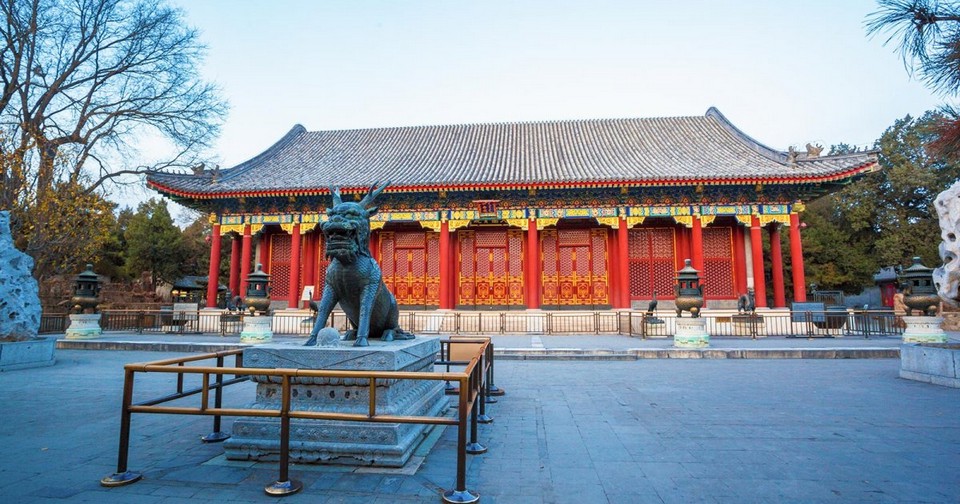
Lake Kunming (#yiheyuan beijing)
Kunming Lake has a large area of up to 220 hectares, accounting for three quarters of Summer Palace Beijing. Along the lakeshore is a 728m long corridor divided into many different sections. Viewing from above, Kunming Lake is shaped like a large peach with stalk is a river that allowing water flowing into the lake through the western gate (Western Dam).
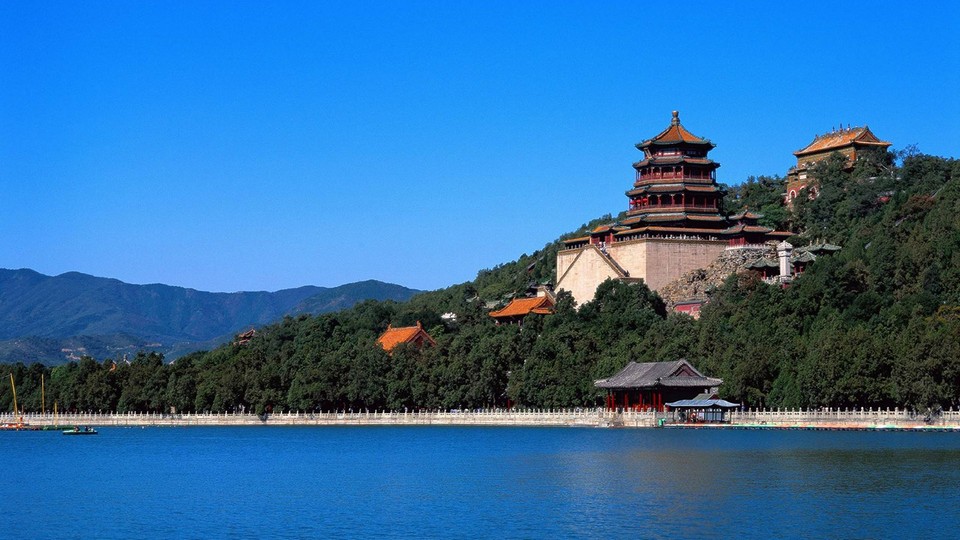
The water of the lake has emerald green color, in the early morning the lake surface is covered with thin mist creating a magical scene. Another special thing is that in winter, the lake surface freezes, tourists can experience walking and ice skating on the immense lake surface.
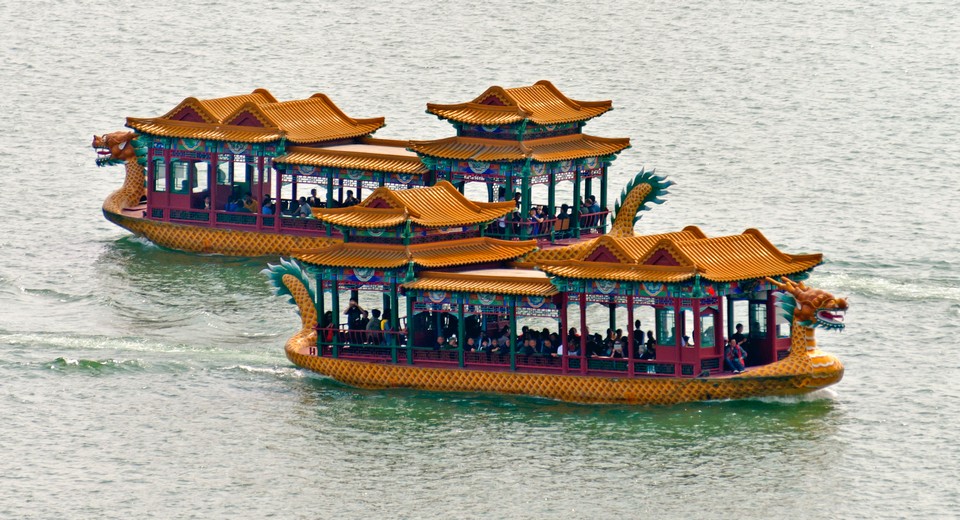
In the middle of Kunming Lake is a small island connected to its bank by The Seventeen-Arch Bridge. The reason is called The Seventeen-Arch Bridge, because the bridge has a total of 17 arches.

Sozhoujie (Suzhou Street)
Legend has it that after a visiting in Jiangnan in 1762, because he wanted his mother to admire the beautiful scenery of Jiangnan without having to struggle to get there. That is why Emperor Qianlong ordered to build this Suzhou street that resembling Shantang Street in Suzhou to celebrate her longevity.
Located on both sides of the river leading water to the lake, the shops on both sides are diverse, from toys shops, clothing stores, fabrics, jewelry, silver, gems to snack food stalls, restaurants.
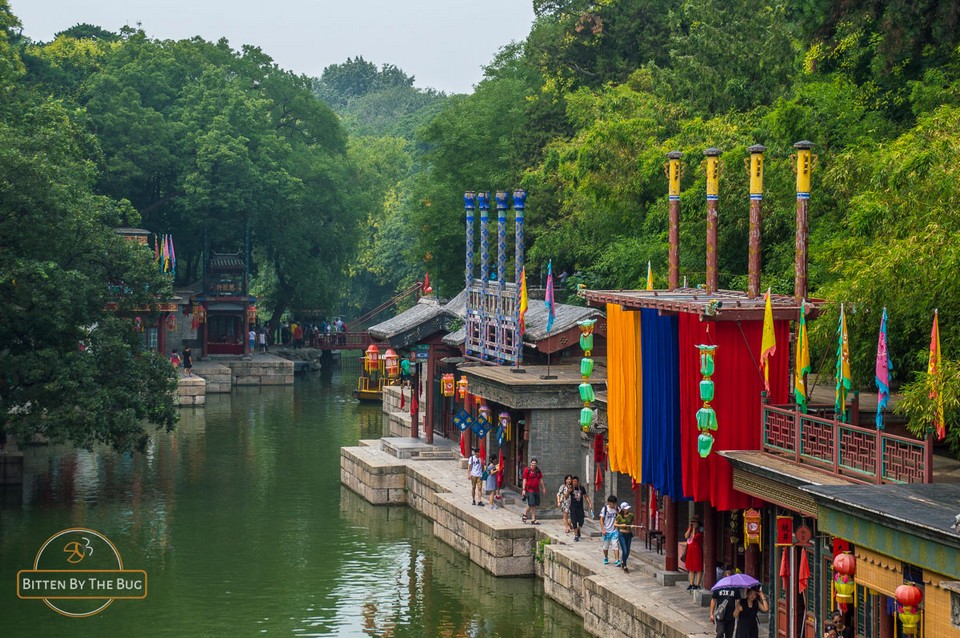
Foxiang Ge (Tower of Buddhist Incense)
Foxiang Ges was built on the back of Longevity Hill with a 21m tall stone base in the Chinese classical architecture style. The tower is 41 m high. At first, the tower was planned to be 9-storey high, to resembling the famous Huanghe Lou (Yellow Crane Tower) in Hubei province. However, for some reason, when it was building to the 8th floor, Qianlong Emperor ordered to stop construction. In 1860, the 10th year of the Xianfeng period, the tower was burned by the British-French allied force, then in the 17th year of Guangxu period (1891), the emperor spent more than 78 thousand taels of silver to restore the tower and lasted 3 years later (1894) newly completed. This splendid and magnificent temple was the place where Empress Dowager Cixi praying and reciting Buddha’s name.
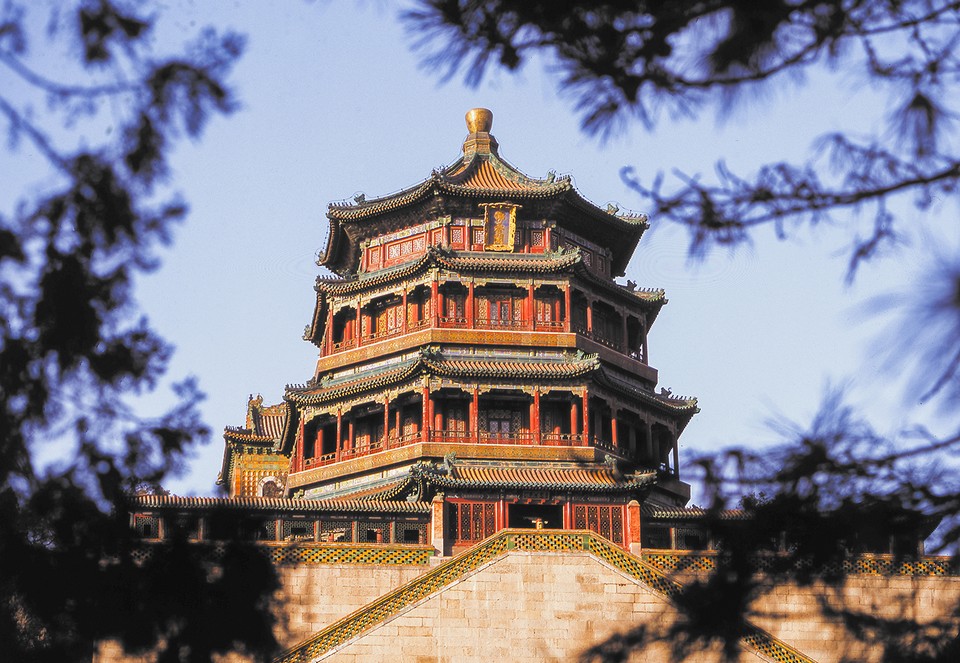
Shifang (Stone Boat)
This stone boat was built in the 20th year of Emperor Qianlong’s reign (1755), which was created by marbleand shaped in a traditional Chinese boat model with a length of 36 m, the entire body of the boat was carved with dragon-shaped patterns. The boat is a copy version of the original wooden boat which was burnt in 1860.
Currently, it becomes a restaurant specializing in royal cuisine, having welcomed many heads of state and leaders of countries to visit.
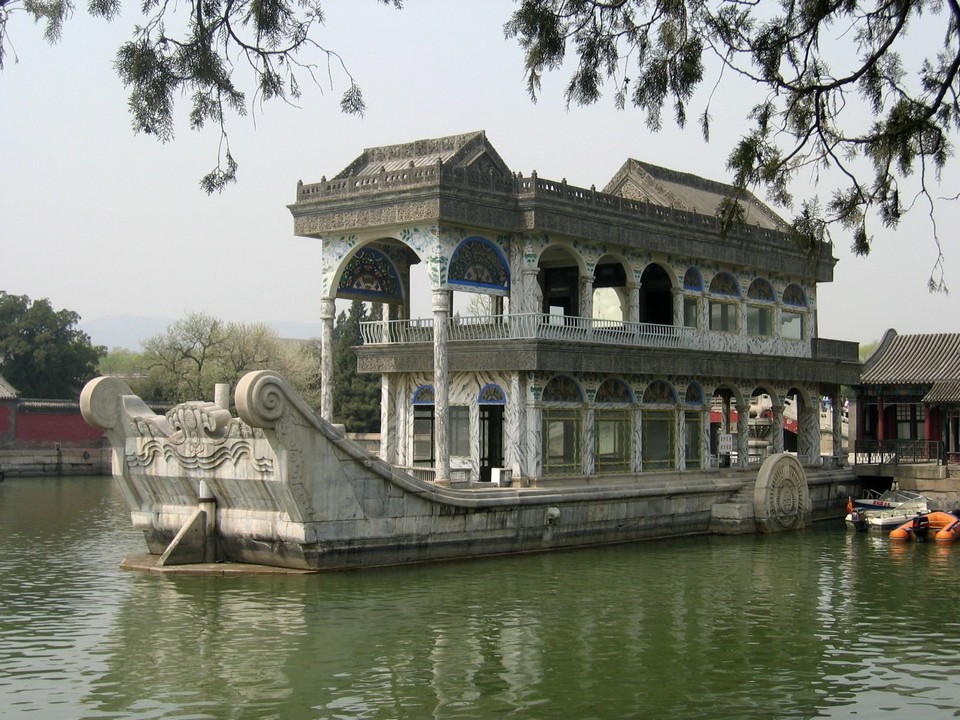
Changlang (Long Corridor)
Another Yiheyuan’s tourist attraction is Changlang. With 273 sections and a total length of up to 738m, this is the longest corridor in the Chinese classical garden architecture. Not simply a corridor, this is also a work of art crystallized from the talented hands of Chinese artisans.
Legend has it that because the Changlang is too long, to avoid the boring and dull. Emperor Qianlong has decorated the Changlang with a series of paintings, depecting the content of Chinese folk tales and legends, classic references.
Since then, this corridor has become a museum, once stepping inside and walking along it, you will feel like get lost in ancient times.

The Seventeen-Arch Bridge
The bridge is made of stone with 17 arches connecting the lakeshore with a small island in the middle of Kunming Lake. The Seventeen-Arch Bridge is 8m wide, 150m long and is the longest bridge in Summer Palace Beijing. The bridge opposites Longevity Hill, it’s like a stretching neck upwards of a turtle, whose head is the small island in the middle of Kunming Lake.
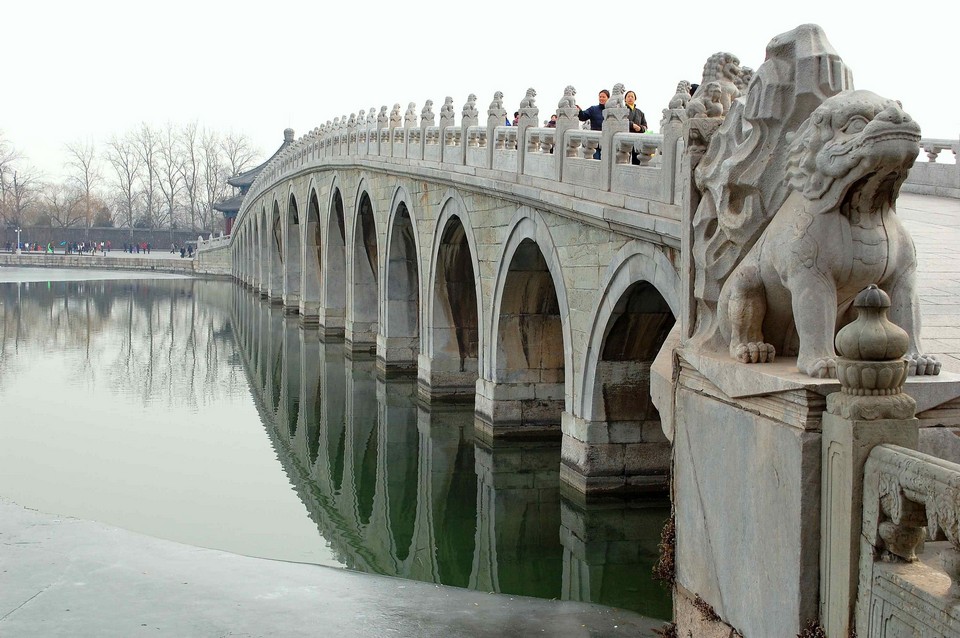
According to traditional Chinese feng shui, the peach fruit represents Fu (Happiness), the bat represents Lu (Wealth), and the turtle represents Shou (Longevity). Thus, the overall architecture of Summer Palace China hid in it all three things above that Empress Dowager Cixi wished for Fu, Lu, Shou which was presented by wonderful constructions.
Tongniu (Bronze Ox)
The bronze ox statue was cast in 1755, located in the Northeast of The Seventeen-Arch Bridge. Local people call it “Golden Ox”. Legend it can prevent flooding. Tourists can see the poem composed by Emperor Qianlong himself printed on its body with the meaning of flood control.

Leshoutang (Hall of Joy and Longevity)
Leshoutang is the main residence in the Summer Place Beijing residential area. In the front, there is a signboard with three golden letters written by Emperor Guangxu himself. Inside Leshoutang, there is also a throne, fan, screen, court… for the king to meeting mandarins and handle the main affairs of the state.
In particular, in front of the main gate of the hall, there is also a rose tree, a deer statue, a vase and a crane. According to traditional Chinese feng shui, these are the objects representing peace, a peaceful world. In addition, there are many kinds of precious trees planted in the garden of the palace that represent nobility and wealth such as Malus spectabilis (Chinese Flowering Crabapple), Michelia, Chinese peony…
Yiheyuan travel blog: When to visit Summer Palace Beijing?
Yiheyuan has a different beauty in each season. But in my opinion the most beautiful time to visit is in autumn, when the leaves start to change its color. However, it must be added that the autumn in Beijing is quite cold, I came here in November and the temperature is only 2-8 degrees Celsius.
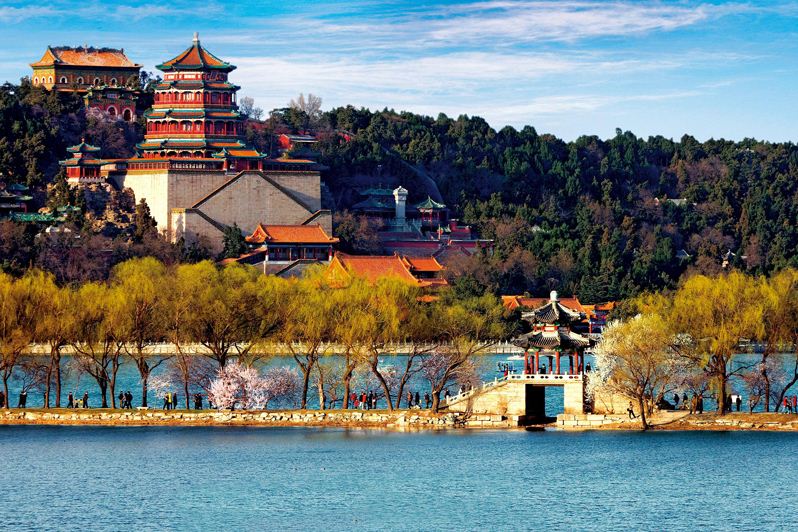

For best visit, you should go in the morning, when Yuheyuan just opening. Firstly, the light will be very beautiful at that time, plus another mist on the lake will feel like you are in a fairyland. Second, this is also the most touristless moment of the day at Summer Palace Beijing.
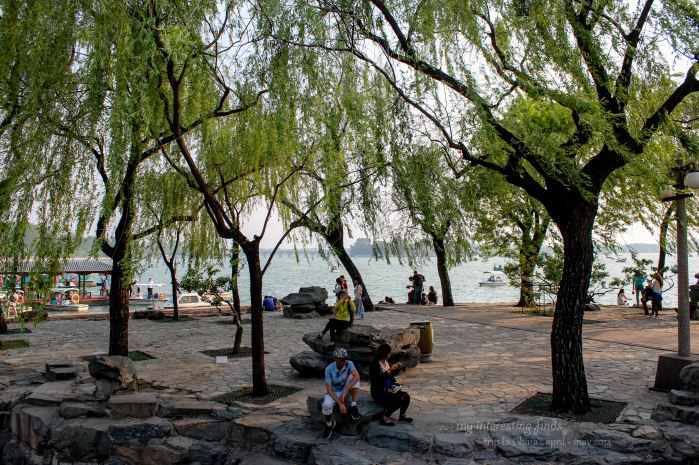
How to visit Summer Palace Beijing and how long is enough?
Yiheyuan is quite large, you cannot visit all corners in a day while its opening time is also limited. That is why it is advisable to spend only 3-4 hours for a visit and visit main spots such as: Suzhou Market Street, Tower of Buddhist Incense, Long Corridor…

You should start at Beigongmen gate (the North Gate), then go in the following order after Suzhou Street, Tower of Buddhist Incense, Long Corridor. When you finish visiting the northern bank, continue to go to the pier to take a boat tour to across Kunming Lake. The boat will dock at the pier right next to The Seventeen-Arch Bridge and the East Gate of Summer Palace Beijing. You can walking on this bridge and get out at this East Gate.

Before you go to Yiheyuan Beijing
- There are restaurants and shops in Yiheyuan, but it is best should not eating or buying here dute to expensive and the food is also not tasty.
- I went early so I bought tickets without having to wait in line. If you go into the peak season, you should buy tickets in advance to avoid wasting time.
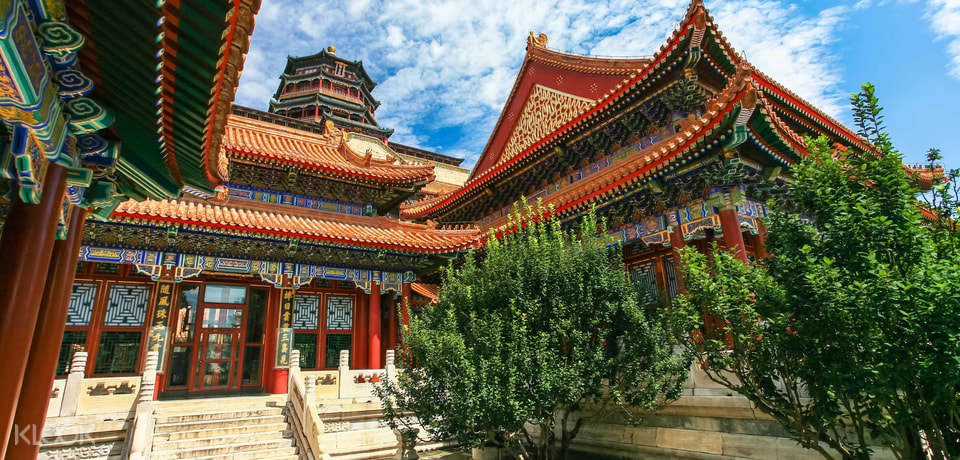
Some best day tours, trips, activities and transfer services, tickets in, from and to Beijing you can refer to
- [Up to 15% Off for Round Trip Transfers] Private Beijing Capital Airport Transfers (PEK) for Beijing
- Beijing Palace Museum Ticket (The Forbidden City)
- Summer Palace (Yiheyuan) Admission Ticket in Beijing
- Beijing Palace Museum Ticket with Guide (Private Tour)
- [Klook Exclusive: 20% Off] Complete Beijing Tour
- Iconic Beijing Private Tour
- [Sale] Mutianyu Great Wall Day Tour from Beijing (With Pick Up)
- 4G SIM Card for Mainland China – Provided by Skyroam
Are you looking for more top things to do in Beijing: Tours, activities, attractions and other things? Let’s check it out here. And China here.

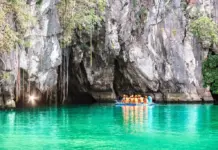






























![10 best airports in Asia in 2016 [RANKED] kuala-lumpur-international-airport-best airports in asia in 2016 by skytrax ratings](https://livingnomads.com/wp-content/uploads/2016/08/29/kuala-lumpur-international-airport-best-airports-in-asia-in-2016-by-skytrax-ratings-218x150.jpg)








